Captured 105-mm cannons and 150-mm heavy field howitzers in service in the Red Army
The armed forces of Nazi Germany had a wide variety of artillery systems for various purposes, produced in Germany, as well as in occupied countries. And the Red Army undoubtedly captured and used many of them. But today we will talk about captured guns and howitzers, the use of which in the Red Army is documented.
Of greatest interest in terms of use against the former owners were German 105-mm long-range guns and 150-mm heavy field howitzers. This was due to the fact that the Red Army was not badly saturated with regimental and divisional 76-122-mm guns. At the same time, long-range artillery systems of larger calibers, capable of effectively destroying defensive structures well-prepared in engineering terms, carrying out counter-battery warfare and destroying targets deep in the enemy's defenses, were traditionally not enough.
105 mm heavy field gun 10 cm sK.18
From the Kaiser's army, the Reichswehr got three dozen 10 cm K.17 heavy cannons (10 cm Kanone 17,10 cm cannon 17). The true caliber of the gun was 105 mm.
This gun had a classic design for the period of the First World War: with a single-bar riveted carriage, wooden wheels, no suspension and low traverse angles. To reduce recoil, a hydraulic spring system was used. The mass of the gun in the firing position was 3300 kg.
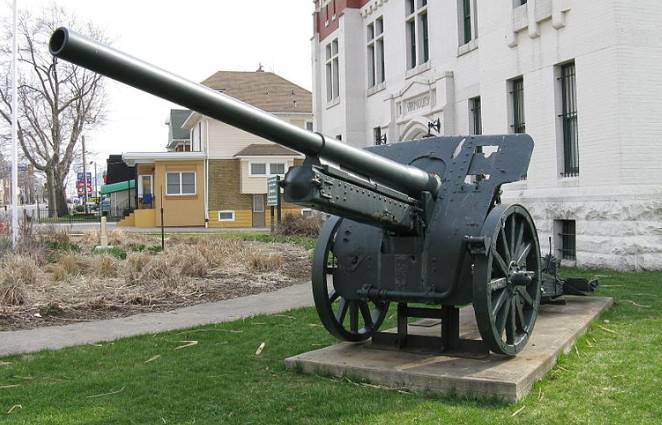
105 mm K.17 heavy cannon
Although only a small number of K.17 guns were delivered to the front (approximately 180 units), they managed to demonstrate their value in counter-battery combat. At a maximum elevation angle of + 45 °, a high-explosive fragmentation grenade weighing 18,5 kg flew 16,5 km.
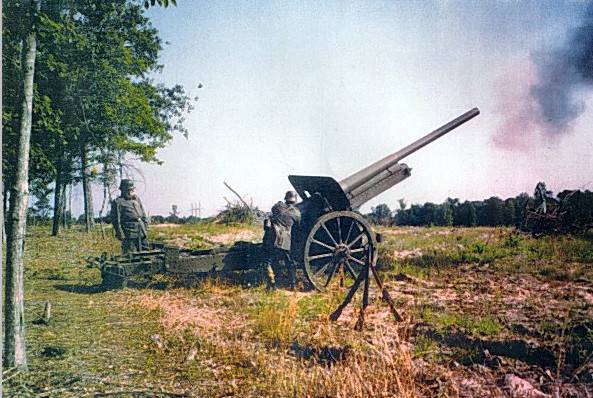
After the conclusion of the Treaty of Versailles, Germany was obliged to transfer most of the 105-mm long-range guns to other countries or disassemble. However, the Germans managed to keep some of the 105-mm guns. And during the Second World War, they served in coastal batteries.
After the defeat in the First World War, the Germans were forbidden to develop any new weapons systems. But after a while, secret work began on the creation of long-range artillery pieces.
Taking into account the experience of the combat use of the K.17 cannons, in 1926 the Reichswehr command issued Krupp and Rheinmetall a technical assignment for the development of a new 105-mm gun. Work on the 105-mm cannon proceeded in parallel with the design of a heavy 150-mm field howitzer.
The creation of a unified "duplex" proved to be a daunting task. Although prototypes were embodied in metal in 1930, the first samples of the guns were submitted for testing in 1933. By the standards of the 1920s – 1930s, the new 105-mm gun took a long time to design. But a long period of secret development, testing and refinement was not in vain. And he made it possible to immediately transfer to the troops a good weapon, practically devoid of "childhood illnesses".
The two largest German manufacturers of artillery weapons fought for a very lucrative contract. But the German military leadership made a compromise, opting for a Krupp gun carriage and a Rheinmetall barrel.
The new carriage, in contrast to the previously existing systems, was made with sliding beds, provided three points of support and, in terms of characteristics, approached the carriage with a cruciform base.
Due to the use of sliding beds, the weight of the new 105 mm gun has increased by almost 17 times compared to the K.1,7 (from 3300 to 5642 kg). But this made it possible to increase the guidance sector in the horizontal plane from 6 ° to 60 °. The maximum vertical guidance angle was + 48 °. In extreme cases, it was allowed to fire with the beds down. But in this case, the angle of horizontal and vertical guidance was limited.
The barrel of a 150-mm heavy field howitzer sFH18 could be installed on the same carriage. Thus, two different artillery systems were implemented on the same gun carriage.
Serial production of the gun, designated 10 cm sK18 (10 cm Schwere Kanone 18 - 10 cm heavy gun), began in 1936. A number of sources also contain the name 10,5 cm sK18.
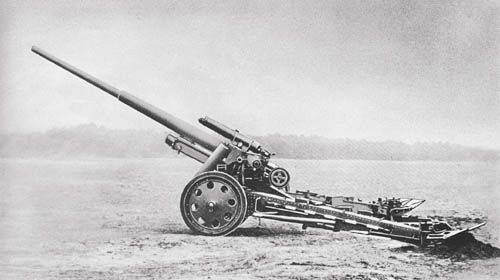
105 mm sK18 heavy cannon
The barrels were manufactured at Krupp and Rheinmetall-Borsig AG. Gun barrels made by different firms differed in details, but were interchangeable. Carriages were produced only by Krupp.
The price of one gun was 37 Reichsmarks.
For firing the 105-mm sK18 heavy cannon, separate-case loading shots were used. Three numbers of powder charges were placed in a brass or steel sleeve 445 mm long, depending on the firing range: small (weight 2,075–2,475 kg, depending on the type of powder), medium (2,850–3,475 kg) and large (4,925–5,852 kg). When firing a high-explosive fragmentation grenade weighing 15,14 kg, a small charge provided an initial speed of 550 m / s and a maximum firing range of 12 725 m. Medium - 690 m / s and 15 750 m, respectively. Large - 835 m / s and 19 075 m.
Rate of fire - up to 6 rds / min.
The ammunition consisted of three types of shells:
- 10,5 cm Gr. 19 - high-explosive fragmentation projectile weighing 15,14 kg;
- 10,5 cm Gr. 38 Nb - smoke shell weighing 14,71 kg;
- 10,5 cm Pz.Gr. Rot is an armor-piercing projectile weighing 15,6 kg.
For better visibility of the gap at a great distance and to facilitate the process of adjusting artillery fire by observers, in addition to a charge of cast TNT weighing 1,75 kg, a high-explosive fragmentation grenade was equipped with a red phosphorus checker, which gave a clearly visible white smoke.
An armor-piercing projectile was fired using a large charge. Its initial speed was 822 m / s. At a distance of 1000 m, this projectile could normally penetrate 135 mm armor, which ensured confident defeat of all medium and heavy Soviet tanks.
Taking into account the fact that the weight of the artillery system was very significant, and there were no tractors with the necessary characteristics in the mid-1930s in Germany, a separate carriage of the barrel and gun carriage was used.
The gun was disassembled into two parts and transported on a gun and gun carriage. For horse traction, teams of six horses were used. The towing speed in this way reached 8 km / h. Disassembled, the 105-mm cannon could be towed by mechanical traction at a speed of up to 40 km / h on an asphalt highway.
The transfer of the gun from the traveling position to the combat position with a separate carriage took 6-8 minutes. And required the efforts of nine people. For horse-drawn carriage, all-metal wheels were used, for mechanical traction - metal wheels with a rubber cast rim.
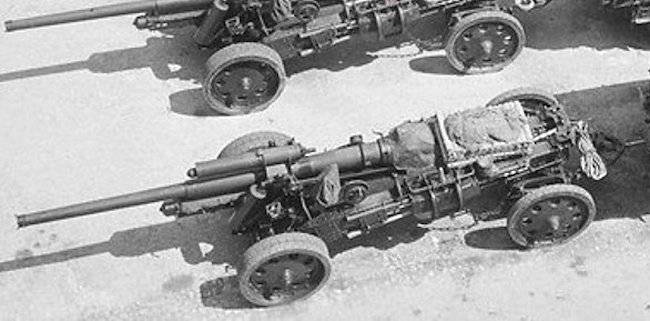
In the late 1930s, the Sd.Kfz.105 half-track tractor was used to tow 18 mm sK150 cannons and 18 mm sFH7 howitzers. And the gun could not be disassembled, but towed entirely.

To tow the gun with a tractor, the barrel was transferred to the stowed position (pulled back). The time for transferring the gun from the traveling position to the combat position with an indivisible carriage was reduced to 3-4 minutes.
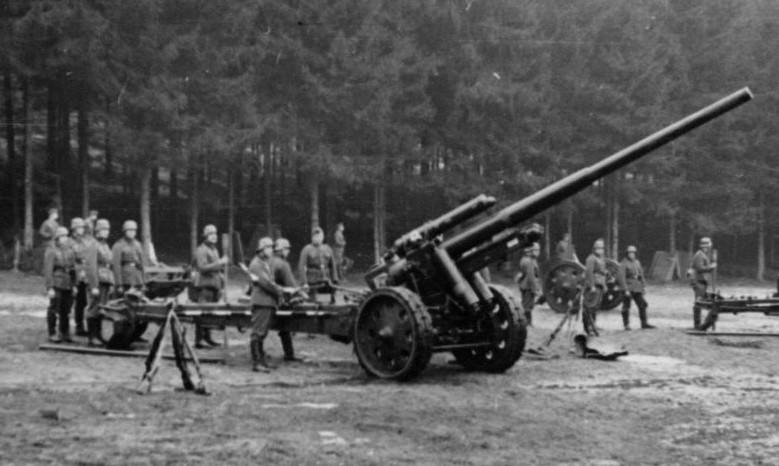
Large weight forced to abandon the shield cover of the calculation. This was explained by the fact that the gun is intended for firing from the depths of its positions. And direct fire would be needed only in exceptional cases.
In 1941, based on the experience of combat use, a modernized version of the 105-mm gun was created. In order to increase the firing range to 21 km, the barrel was lengthened by 8 calibers, and the weight of a large powder charge was brought to 7,5 kg.
For the modernized gun, a more technologically advanced carriage was used. This gun received the designation sK18 / 40. Subsequently (after making a number of changes aimed at strengthening the structure) - sK18 / 42. At the same time, the mass of the modernized gun increased to 6430 kg.
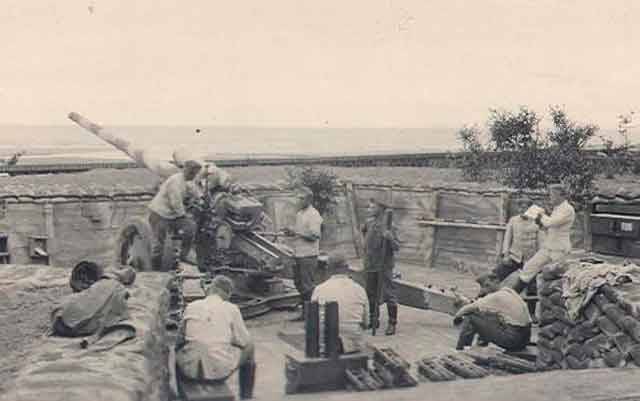
By the beginning of World War II, the Wehrmacht had 702 105-mm long-range guns. And the German command considered this number to be quite sufficient.
In 1940, the industry delivered only 35 of these guns. And in 1941 and 1942, respectively, 108 and 135 guns.
Significant losses incurred on the Eastern Front demanded a sharp increase in production. And in 1943, 454 guns were sent to the troops. And in 1944, 701 guns were made. Until February 1945, German factories were able to produce 74 units.
Thus, the armed forces of Nazi Germany received 2209 sK18 cannons of all modifications.
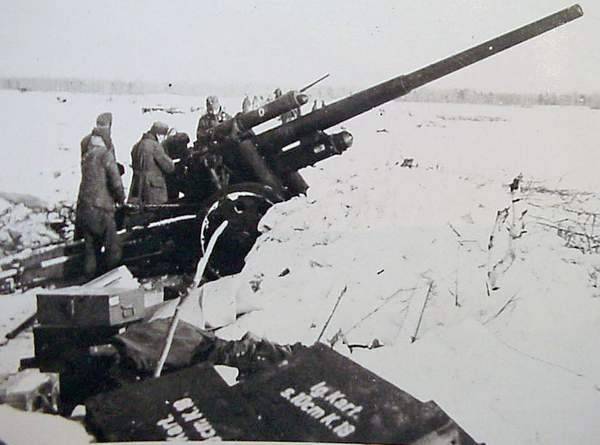
The 10 cm sK18 cannons were used as part of the RGK artillery in three-battery cannon divisions.
There were also mixed divisions: two batteries of 150mm heavy field howitzers and one battery of 105mm cannons. Some of the motorized and tank divisions had similar mixed divisions. If necessary, 105-mm long-range guns could be attached to infantry divisions. Several batteries armed with sK18 cannons are known to have been used in coastal defense.
The sK18 cannon was a fairly effective means of engaging weakly protected targets deep in enemy defenses and was often used for counter-battery combat. At the same time, the power of a 105-mm projectile was often not enough to destroy long-term defensive structures.
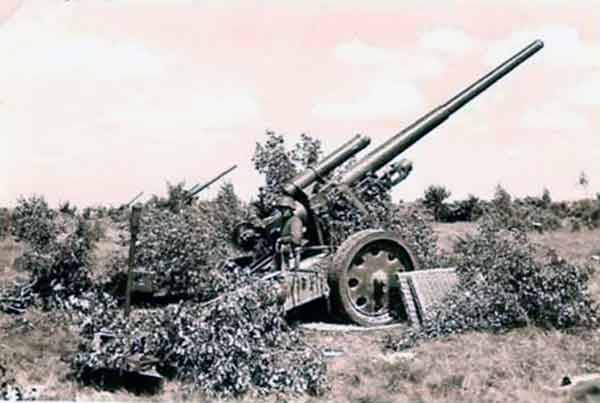
In the initial period of the war in the east, the sK18 guns (along with the 88-mm anti-aircraft guns) were among the few German artillery systems capable of fighting the new Soviet medium and heavy tanks.
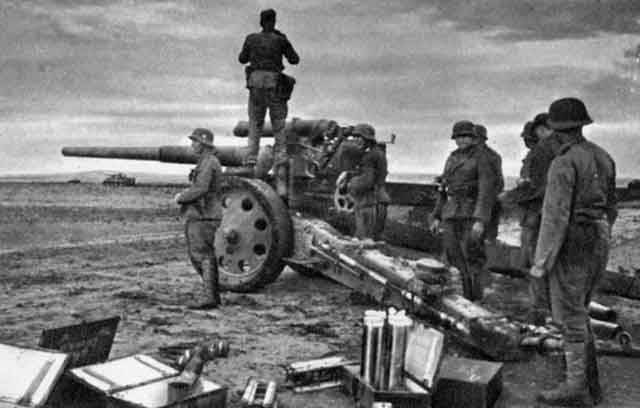
Although it was irrational to put such expensive and heavy guns on direct fire, such use of 105-mm guns took place throughout the war.
However, the Red Army also sometimes tried to compensate for the shortage of powerful anti-tank guns at the expense of 107-mm M-60 cannons and 122-mm A-19 cannons.
The closest Soviet analogue of the German 105-mm gun can be considered the 107-mm M-60 cannon.
In terms of firing range, the sK18 gun was slightly superior to the Soviet 107-mm cannon (19 m versus 075 m). At the same time, the 18-mm high-explosive fragmentation grenade OF-300 weighed 107 kg, and the German 420 cm Gr. 17,2 - 10,5 kg. The Soviet gun was much lighter: the mass of the M-19 in the combat position was 15,4 kg (60 kg in the stowed position with the front end), and the mass of the sK4000 was 4300 kg in the combat position and 18 kg in the stowed position.
The use of German 105-mm sK18 guns in the Red Army and in the armed forces of other states
For the first time, a noticeable number of 10 cm sK18 guns were captured by the Red Army during the counterattack in the winter of 1941-1942.
However, a significant part of the captured 105-mm guns got out of order. This was due to the fact that the German artillerymen in the first year of the war with the USSR were not ready to operate their guns in the conditions of the Russian winter. At temperatures below –20 ° Celsius, the liquid used in the recoil device becomes very thick. And the system was out of order when firing.
Some of the captured 105-mm guns were repaired. And the first four-gun battery of 105 mm guns of German production appeared in the Red Army in February 1942.
However, in 1942, the captured sK18 cannons in the Red Army were used to a limited extent.
This was mainly due to the fact that in the conditions of defensive hostilities, the battlefield most often remained behind the enemy. And there was nowhere to replenish the expended ammunition. In addition, there was a catastrophic shortage of means of mechanized traction. Under these conditions, the surviving 105-mm long-range guns were evacuated to the rear.
The next time, about two dozen 10 cm sK18 cannons suitable for further use and a significant number of shots for them were at the disposal of the Red Army after the surrender of the 6th German army, surrounded at Stalingrad.
Later (in the second half of the war), our troops regularly captured the 105-mm sK18 cannon. Most often, the trophies turned out to be guns thrown into positions, due to the impossibility of evacuation or due to the failure of tractors. Sometimes the surviving guns could be found among the broken equipment of German military columns destroyed by our attack aircraft on the march.
Although during the fighting, the Soviet troops managed to capture relatively little of the serviceable sK18 guns - about 50 units, they were actively used against their former owners from the second half of 1943.
In order to facilitate the development of captured guns by Soviet calculations, shooting tables were translated into Russian and an operating manual was issued.
The captured 105-mm cannons were transferred to the RVGK formations and actively fought along with their own long-range artillery.
Apparently, after the surrender of Germany, among the trophies of the Red Army there was a solid number of 105-mm cannons, which were in storage until the second half of the 1950s.
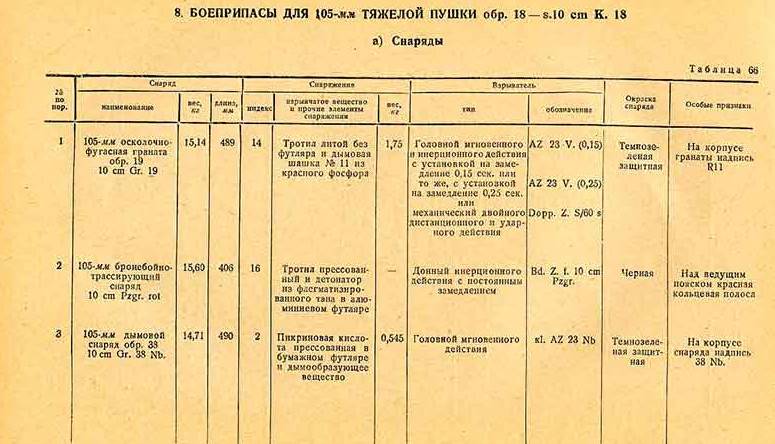
Page from the reference book: "Ammunition of the former German army"
In 1946, a reference book "Ammunition for the Former German Army" was published, in which the shells for the 105-mm sK18 cannon were described in detail.
In addition to Germany and the USSR, 105-mm guns were used in the deployed forces of other states.
In 1939, along with other weapons, Bulgaria received a batch of 105 mm sK18 field guns. These guns were in service with the Bulgarian army until the early 1960s.
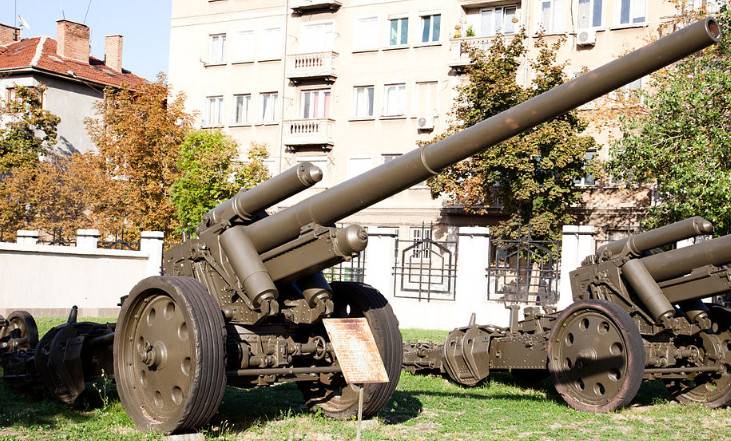
After the end of World War II, several dozen 105-mm guns were available in France, Czechoslovakia and Albania.
Heavy 150 mm howitzer 15 cm sFH18
The Versailles Treaty forbade the Reichswehr to be armed with guns with a caliber of 150 mm and above.
The only exception was made for the Königsberg fortress, where 12 150 mm sF.H.13 lg field howitzers survived. This modification differed from the standard 150 mm sFH13 howitzer (schwere Feldhaubitze - heavy field howitzer) with a barrel length increased from 14 to 17 calibers.
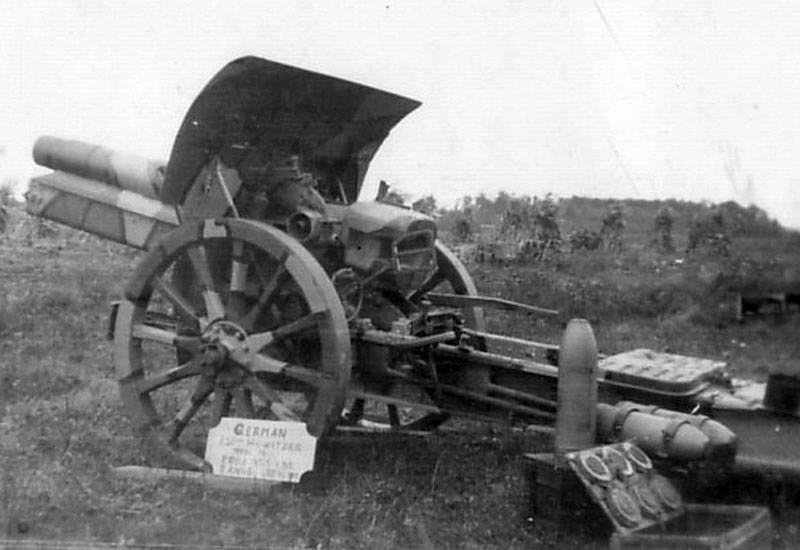
150 mm sFH13 field howitzer
The mass of the gun in the firing position is 2250 kg. The firing range of a high-explosive fragmentation grenade weighing 43,5 kg was 8400 m. The rate of fire was 3 rds / min.
However, the Germans managed to hide about 700 150-mm howitzers until "better times". In 1940, German arsenals were replenished with sFH13 lg howitzers (with an elongated barrel), captured in Belgium and the Netherlands.
Although at the time of the attack on the USSR, sFH13 howitzers were quite numerous in the German armed forces, parts of the first line were mainly armed with the new 150-mm sFH18 heavy field howitzers.
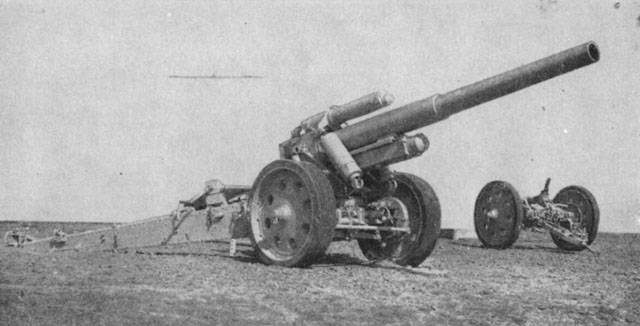
Heavy 150 mm sFH18 howitzer
As mentioned above, this gun was created in parallel with the sK18 cannon. And the carriage with sliding box-shaped beds was unified with the carriage of the 105-mm cannon.
With a barrel length of 29,5 caliber, the maximum muzzle velocity was 520 m / s, and the maximum firing range was 13 m. The rate of fire was 300 rds / min. The vertical guidance angle was from –4 ° to + 3 °. Horizontal guidance - 45 °.
In combat position, the sFH18 howitzer weighed 5530 kg. In the stowed position - 6100 kg. As in the case of the 105 mm sK18 gun, the horse-drawn 150 mm sFH18 howitzer could only be transported in a separate carriage. In preparation for transportation, the barrel was removed from the carriage using a manual winch and placed on a two-axle barrel wagon connected to the front end.
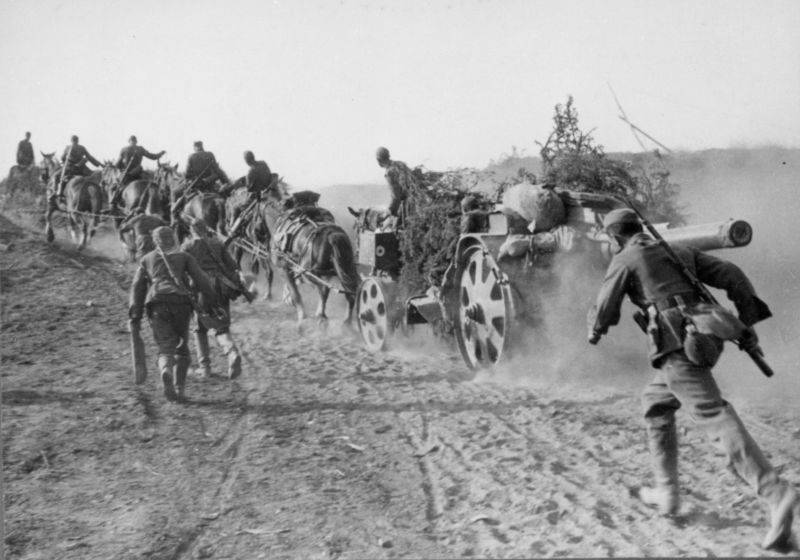
Calculation of 150-mm howitzer sFH18 horse-drawn on the march in the Rzhev area
A cart with a barrel, as well as a carriage with a front end, were transported by teams of six horses. The average speed of transportation on a paved road did not exceed 8 km / h. On soft soils and rough terrain, the speed of movement dropped dramatically. And the calculations often had to push the carts. It was also a very difficult task to turn the cart with a barrel on a narrow road.
A well-trained crew of 12 people transferred the gun from the stowed position and back in 7 minutes.
When using mechanical traction, the gun was towed by the Sd.Kfz. 7 semi-tracked tractor.
The process of bringing to the stowed position was greatly simplified: it was only necessary to remove the openers from the beds, bring the beds together, hoist them on the front end and pull the barrel back to the stowed position. All this took 3-4 minutes.
As is the case with many other Wehrmacht artillery systems, the sFH18 variants for horse and mechanized traction differed in the wheels of the carriage. In the first case, all-metal wheels with a diameter of 1300 mm with steel rims were used, in the second - wheels with a diameter of 1230 mm with rubber cast tires.
The main ammunition load was considered to be a high-explosive fragmentation projectile 15 cm Gr.19 weighing 43,62 kg, containing 4,4 kg of TNT. It was supplied with percussion and mechanical remote fuses. When using a remote fuse and detonation at an optimal height of 10 m, lethal fragments flew forward 26 m and to the sides by 60-65 m. When the head fuse, set for instant action, was triggered, the fragments flew 20 m forward, 50 m to the sides and 6 m ago. A projectile, when hit along the normal, could pierce a concrete wall 0,45 m thick, a brick wall up to 3 m thick.
Concrete-piercing blunt-headed shell 15 cm Gr. 19 Be weighed 43,5 kg and contained 3,18 kg of TNT.
Smoke shell 15 cm Gr. 19 Nb weighing 38,97 kg contained an explosive charge weighing 0,5 kg and 4,5 kg of smoke-forming composition. When it burst, a smoke cloud with a diameter of up to 50 m was formed, which remained with a weak wind for up to 40 s.
During the Second World War, several new shells were introduced into the 150-mm heavy field howitzer ammunition:
- Cumulative projectile 15 cm Gr. 39 H1 / A with a mass of 25 kg contained a 4 kg charge of an alloy of TNT with RDX. Armor penetration was 180-200 mm at a meeting angle of 45 ° from the normal, which made it possible to hit tanks of any type.
- Armor-piercing sub-caliber projectile 15 cm PzGr. 39 TS, weighing 15 kg, could penetrate 1000 mm armor at a distance of 125 m along the normal.
- Improved 150 mm high-explosive fragmentation grenade 15 cm Gr. 36 FES with iron-ceramic guide belt. Its length has been increased from 615 to 680 mm. And the mass of the explosive charge was brought to 5,1 kg.
The loading of the howitzer is separate-sleeve. Eight charges were used for firing. The use of the 7th and 8th charges was allowed only in special situations. And the number of shots on these charges was limited to no more than 10 in a row - this was caused by the accelerated wear of the barrel and the charging chamber.
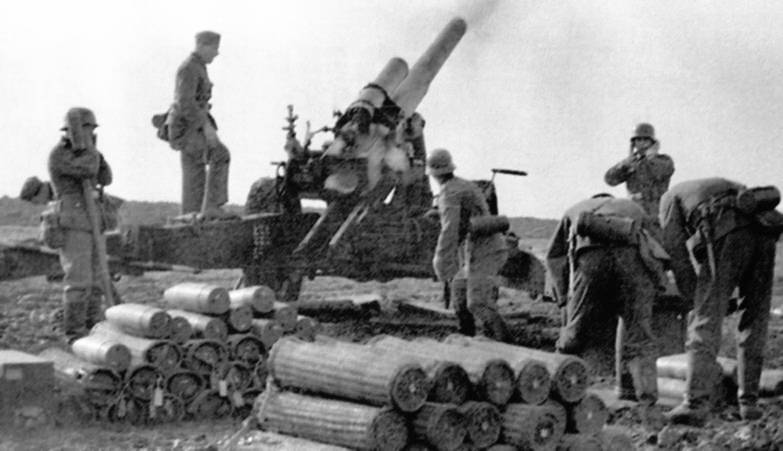
The 150-mm heavy field howitzer was well suited to its purpose. But (taking into account the lack of mechanical traction means), soon after the start of mass production, the army command demanded to reduce the weight of the gun.
In 1939, the production of the lightweight sFH36 howitzer began. Light aluminum alloys were used in the design of the gun carriage. And the mass in the stowed position decreased by 2,8 tons, in the firing position - by 2,23 tons. To reduce the recoil, a muzzle brake was used. The barrel of the sFH36 is 99 cm shorter than that of the sFH18, and the firing range is reduced by 825 m.
The weight savings achieved by the introduction of a light-alloy gun carriage and a shortened barrel made it possible to tow the howitzer with one six-horse team. However, due to a shortage of aluminum and technological difficulties with the manufacture of cast parts from light alloys, the production of sFH36 was stopped in 1941. And the released number of howitzers of this modification was very small.
In 1938, the development of another version of the 150-mm howitzer, intended exclusively for mechanical traction, began.
The introduction of new projectiles with an iron-ceramic leading belt and an increase in the barrel length by 3 calibers made it possible to increase the firing range to 15 m. Also, to + 675 °, the elevation angle was increased, which gave the gun the properties of a mortar.
The work was carried out at a high rate. And the prototype sFH40 howitzer was ready at the end of 1938. But the decision to launch the gun into mass production was blocked by Adolf Hitler, who first of all demanded an increase in production. weaponsalready in production.
Before the final decision was made to curtail work on the sFH40 howitzer, Krupp managed to release several dozen barrels for them. In order to use these 150 mm barrels, in 1942 they were superimposed on the carriages of the sFH18 howitzers. And this modification was designated sFH42. The maximum firing range of this gun was 15 m. A total of 100 sFH46 howitzers were produced.
In 1942, the serial production of a "compromise" version began - the sFH18M howitzer with a muzzle brake. Thanks to the innovation, it was possible to reduce the load acting on the howitzer carriage when fired. At the same time, the problem of firing on the 7th and 8th charges was partially solved by introducing replaceable liners into the design of the charging chamber - now, after wear, they could be easily replaced. Whereas previously it was required to replace the entire barrel.
The sFH18M howitzer became the first German serial artillery system, the ammunition of which included active rockets. Such a projectile, designated 15 cm R Gr., Weighed 45,25 kg, and its firing range reached 19 m. Thanks to this, the howitzer gained the ability to hit targets at a distance previously available for the 000 mm sK105 cannons. However, firing with active-rocket projectiles was effective only when conducting harassing fire. The dispersion of such shells at the maximum range turned out to be too great.
Heavy 150mm howitzers as per the staffing table along with 10,5 cm le.FH18 were in one of the four divisions of the infantry division's artillery regiment. The same howitzer was used in individual heavy artillery battalions of the RGK. During World War II, the sFH150 18-mm howitzers were widely used to destroy manpower, counter-battery warfare, destroy fortifications, as well as to fight tanks at their initial positions and shell objects behind enemy lines.
The baptism of fire sFH18 took place in Spain, where two batteries of such guns were sent as part of the Condor Legion. Subsequently, the howitzers were transferred to the Francoists. And after the German instructors trained the Spanish sFH18 crews, they were very effectively used in battles.
Heavy field 150-mm howitzers were used by the Wehrmacht and SS troops at all stages of the war and in all theaters of operations.
The weapon was considered quite reliable, and its shells had great destructive power. The presence of cumulative and sub-caliber armor-piercing shells in the ammunition load theoretically made it possible to use the sFH18 to combat tanks. But in such a guise, a heavy howitzer was used only in exceptional cases - the large weight and dimensions of the gun, as well as the lack of shield cover made it very vulnerable on the battlefield.
However, after a direct hit from a heavy high-explosive fragmentation projectile, which contained up to 5 kg of TNT or ammotol, hardly any tank of the Second World War could remain in service.
Comparing the sFH18 with the Soviet ML-152 20 mm howitzer cannon, it can be noted that the Soviet gun was almost 4 km higher than the German 150 mm howitzer in firing range. The introduction of an active-rocket projectile into the ammunition set only partially alleviated the problem, since the new ammunition had insufficient accuracy.
At the same time, the ML-20 in the combat position weighed 7270 kg, and in the stowed position - 8070 kg.
Thus, the Soviet artillery system was almost 2 tons heavier.
For transportation of ML-20 heavy tracked artillery tractors "Voroshilovets" and "Comintern" were used, which were always in short supply.
The production of sFH18 howitzers from 1934 to 1945 was carried out at the enterprises of the companies Rheinmetall-Borsig AG and Krupp. After the German attack on the Soviet Union, the Czech company Skoda joined in the production of such weapons. The cost of the howitzer, depending on the version, was 38-500 Reichsmarks. 60 howitzers of all modifications were produced.
The use of 150-mm heavy howitzers in the Red Army and in the armed forces of other states
In the late 1930s, almost simultaneously with the shipment of the sFH18 to Spain, 24 howitzers were acquired by the Chinese government.
The Kuomintang troops greatly appreciated and protected these weapons, using them for counter-battery combat and firing at important targets in the depths of the Japanese defense. Currently, one German-made 150mm heavy howitzer is on display at the Beijing Military Museum of the Chinese Revolution.
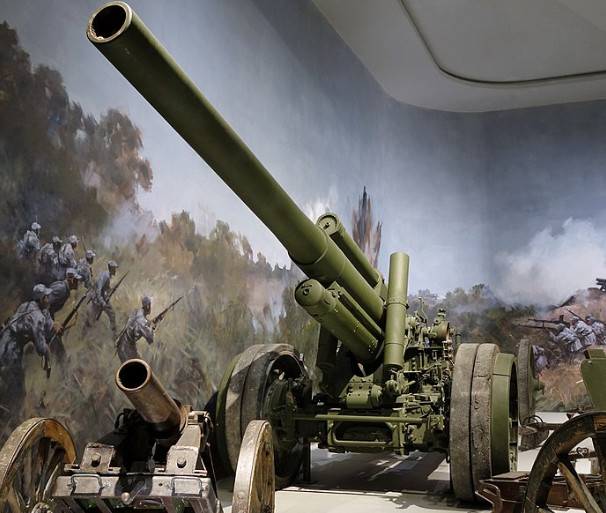
150mm sFH18 howitzer at the War Museum of the Chinese Revolution
Finland acquired 1940 sFH48 howitzers in 18. The guns, designated 150 H / 40, were actively used against the Soviet troops, until Finland's withdrawal from the war. Most of them survived. And in the 1950s, 150-mm howitzers underwent refurbishment.
In 1988, a program was launched to modernize the old 150-mm German howitzers. The most important change was the replacement of the original barrels with a Finnish 152mm barrel with a muzzle brake.
Changes were also made to the carriage; an armor shield was installed to protect the crew from shrapnel. The guns received new wheels with pneumatic tires, which made it possible to increase their towing speed to 60 km / h.
42 howitzers underwent modernization, designated 152 H 88-40. They were in service until 2007.
The Red Army used the captured sFH18 howitzers very actively.
As in the case of the 105-mm sK18 cannon, our troops captured a noticeable number of 150-mm heavy howitzers during the counteroffensive near Moscow. And the first batteries armed with sFH18 howitzers appeared in the Red Army in 1942.
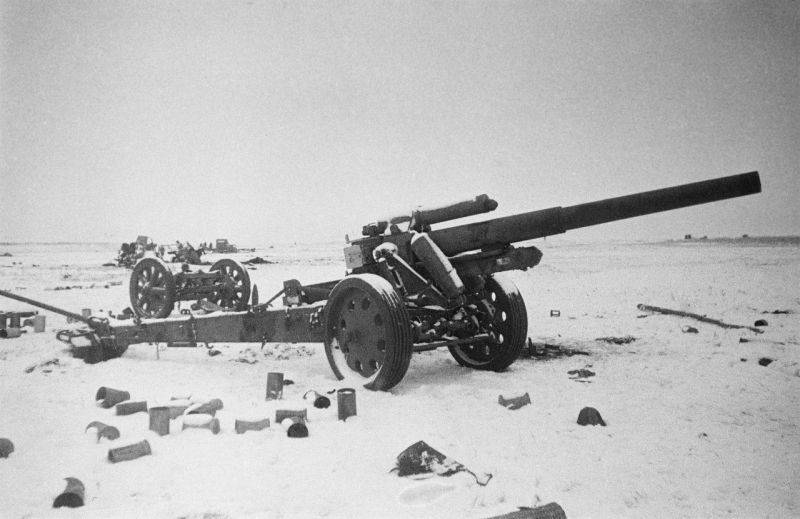
150 mm sFH18 heavy field howitzer, abandoned at a firing position
However, these guns began to be used in noticeable quantities from the spring of 1943. After our specialists managed to deal with the trophies captured after the end of the Battle of Stalingrad.
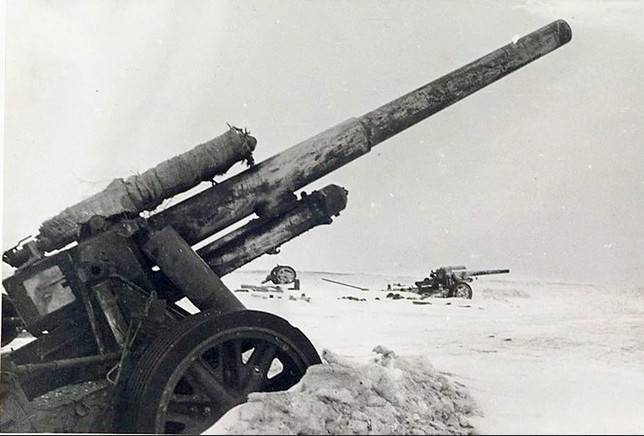
In 1943, GAU published firing tables translated into Russian, a detailed list of ammunition with their characteristics and instructions for use.
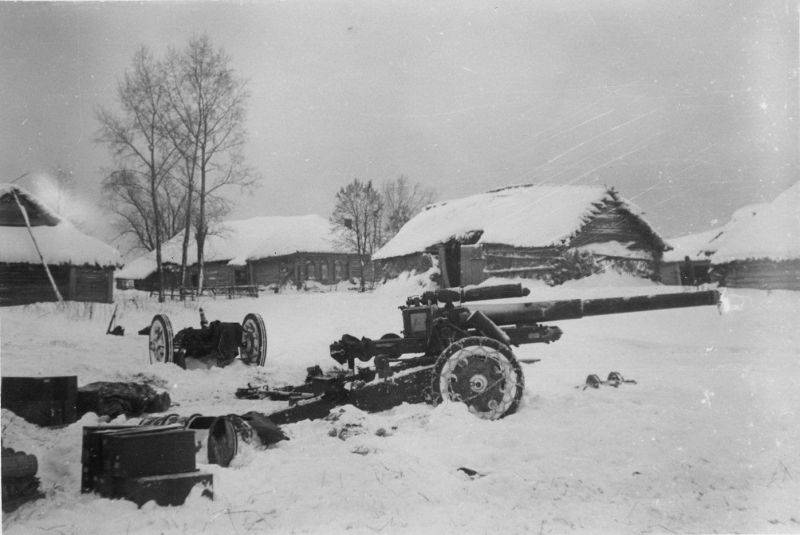
In the Red Army, the gun received the designation "150-mm German heavy field howitzer mod. eighteen".
Captured heavy howitzers and ammunition for them were regularly captured by our troops during offensive operations and were used until the end of hostilities.
Several artillery regiments of corps artillery and brigades of the RVGK were armed with heavy howitzers sFH18. These guns also took part in the hostilities against Japan.
In the post-war period, the sFH18 howitzers available in the Red Army were transferred to storage bases, where they were located until the end of the 1950s.
In addition to the USSR, such weapons were available in the armed forces of Albania, Bulgaria, Portugal and Yugoslavia. France sold them to Latin America and the Middle East.
Czechoslovakia received about 200 howitzers of various modifications. And subsequently released upgraded versions. In the second half of the 1950s, after an audit of the German military legacy, the Czechoslovak army command initiated the creation of a modification of the 15 cm sFH18 field howitzer for Soviet 152-mm shells from the ML-20 howitzer-gun.
The work on the alteration of the howitzer was completed by Skoda specialists in 1948.
During the conversion, the gun barrel was bored to a caliber of 152,4 mm. And in order to reduce the load on structural elements, the barrel was shortened and equipped with a muzzle brake.
Also, in order to reduce recoil, the howitzer was not fired with a full charge. The upgraded guns, designated vz. 18/47, entered service with artillery regiments of motorized rifle and tank divisions of the Czechoslovak People's Army.
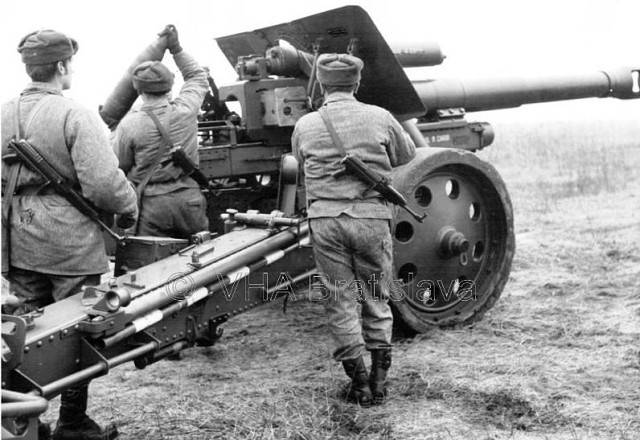
In 1967, the guns were overhauled.
Replacing howitzers vz. 18/47 in units of the Czechoslovak People's Army with the new self-propelled 152 mm howitzers vz. 77 Dana began in the late 1970s. The guns removed from the armament of combat units were transferred to storage.
However, this process was delayed. The 362nd Artillery Regiment of the Czechoslovak Army was armed with vz. 18/47 until 1994.
In the late 1950s - early 1960s, several dozen 152mm vz. 18/47 was acquired by Syria. In this country, they were used in conjunction with Soviet 152-mm cannons ML-20 howitzers and D-1 howitzers.
There is information that the Czech-German "hybrid" weapons were used by the armed Syrian opposition in 2015.
The ending should ...
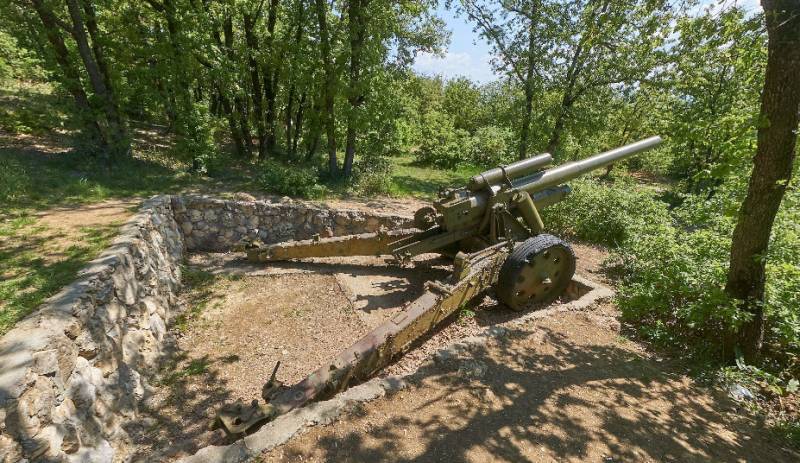
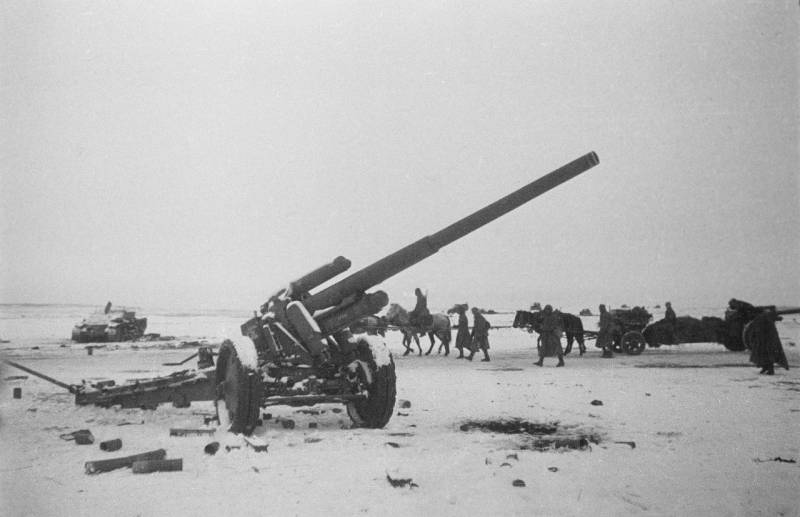
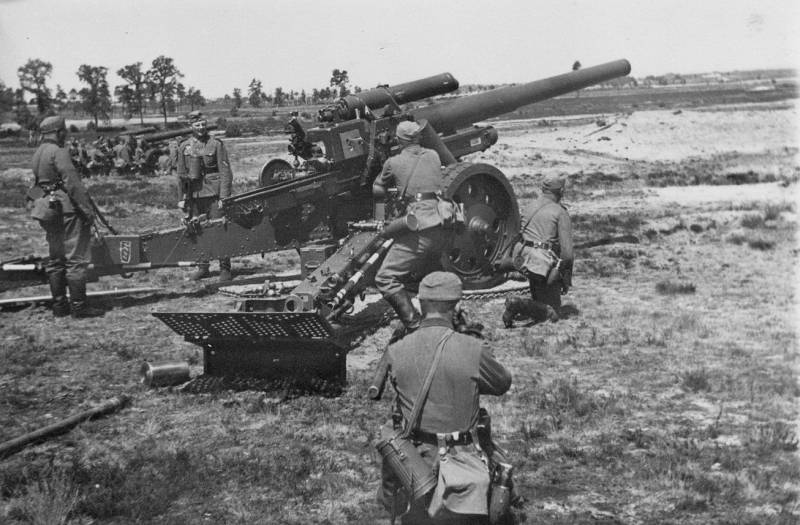
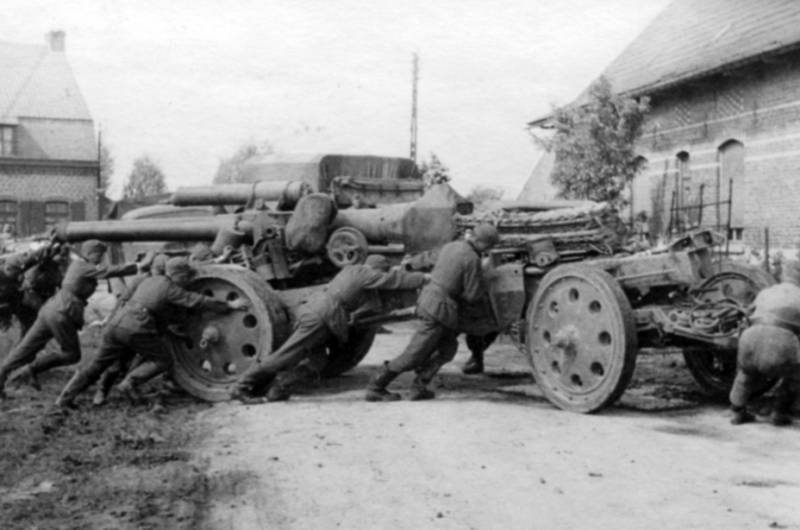
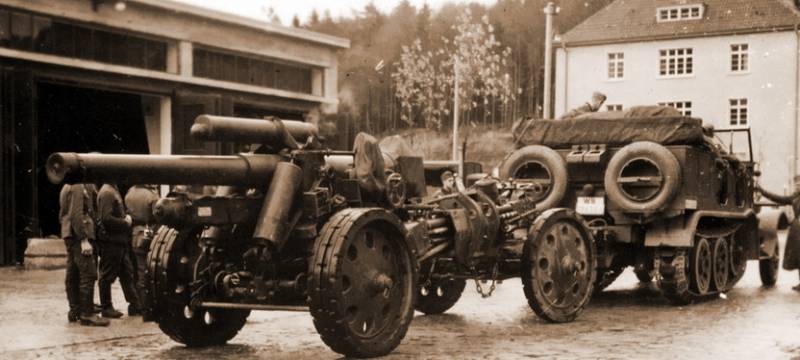
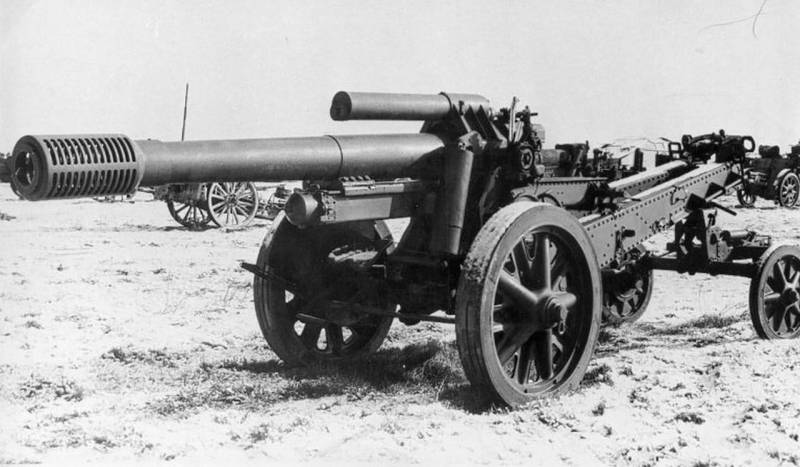
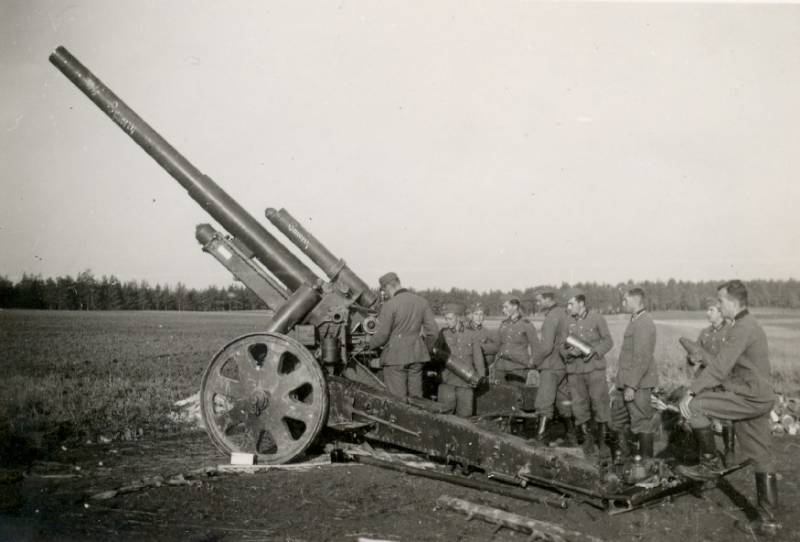
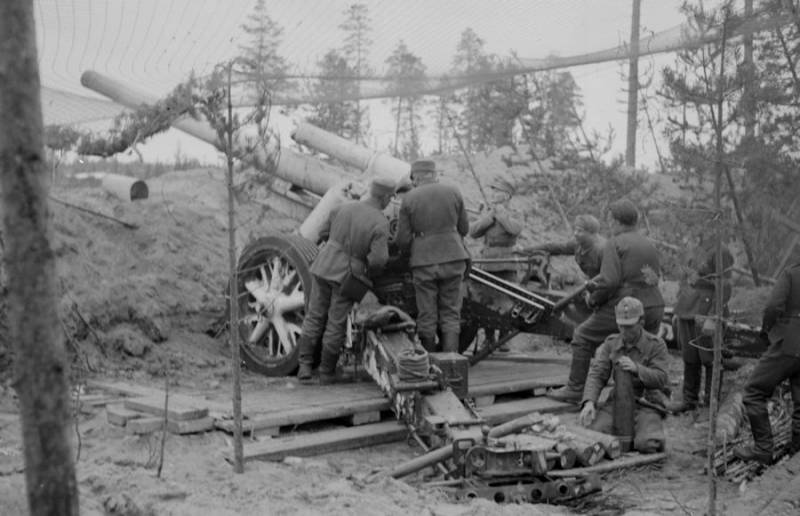
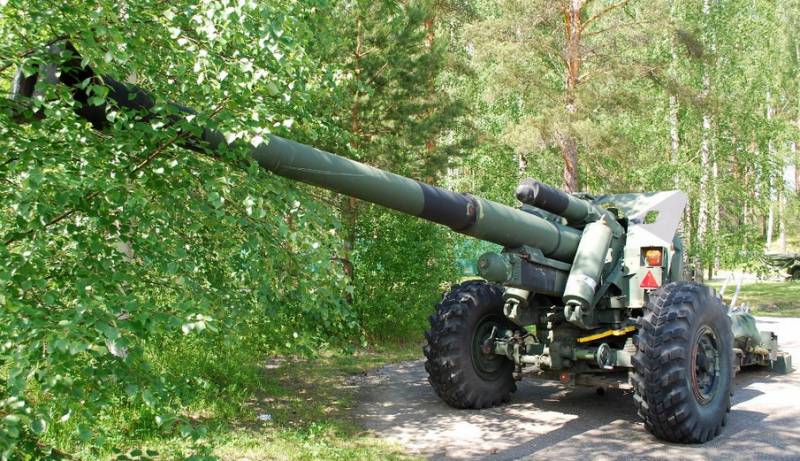
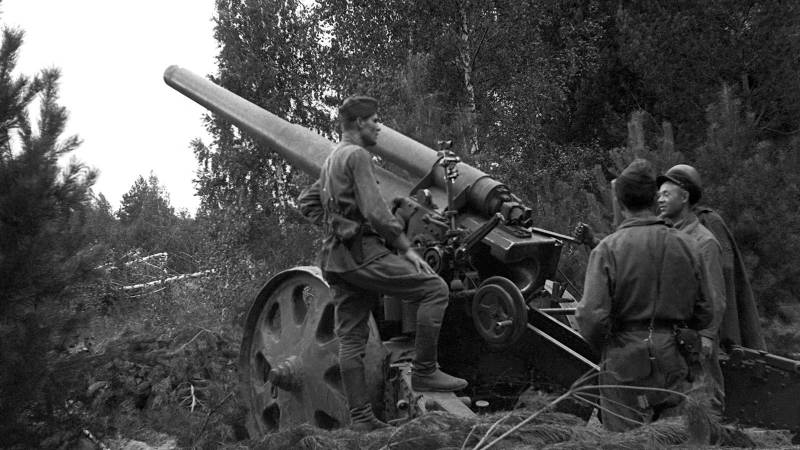
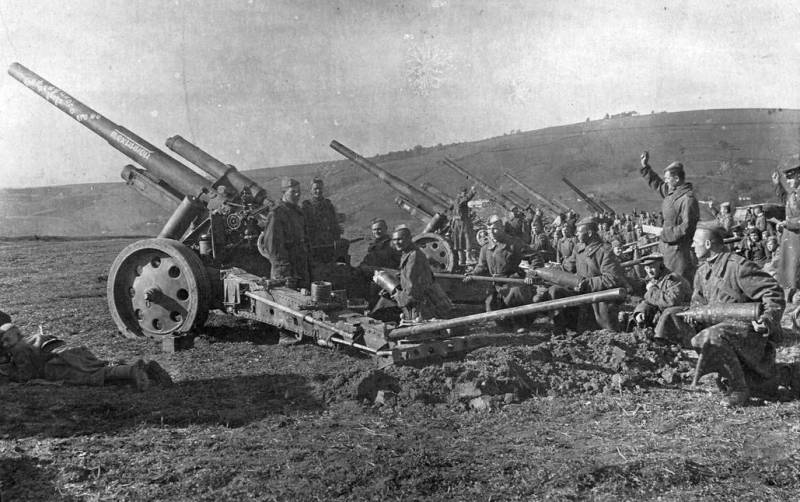
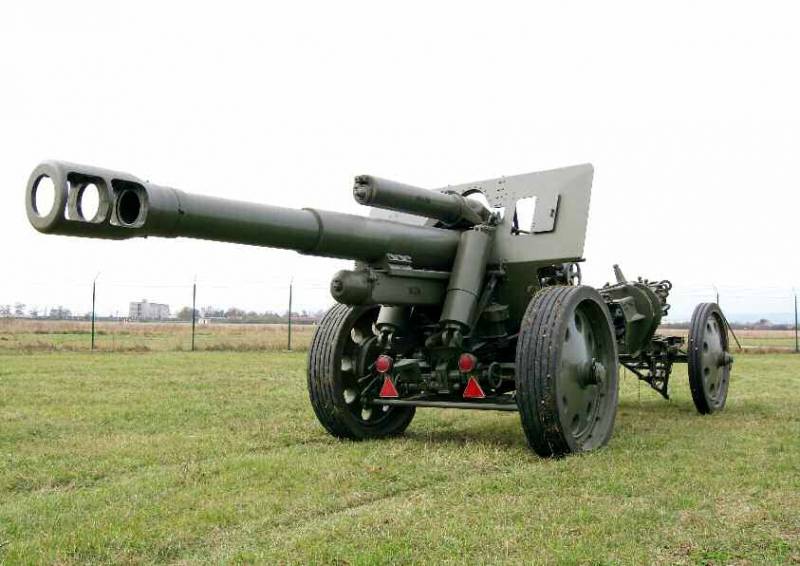
Information